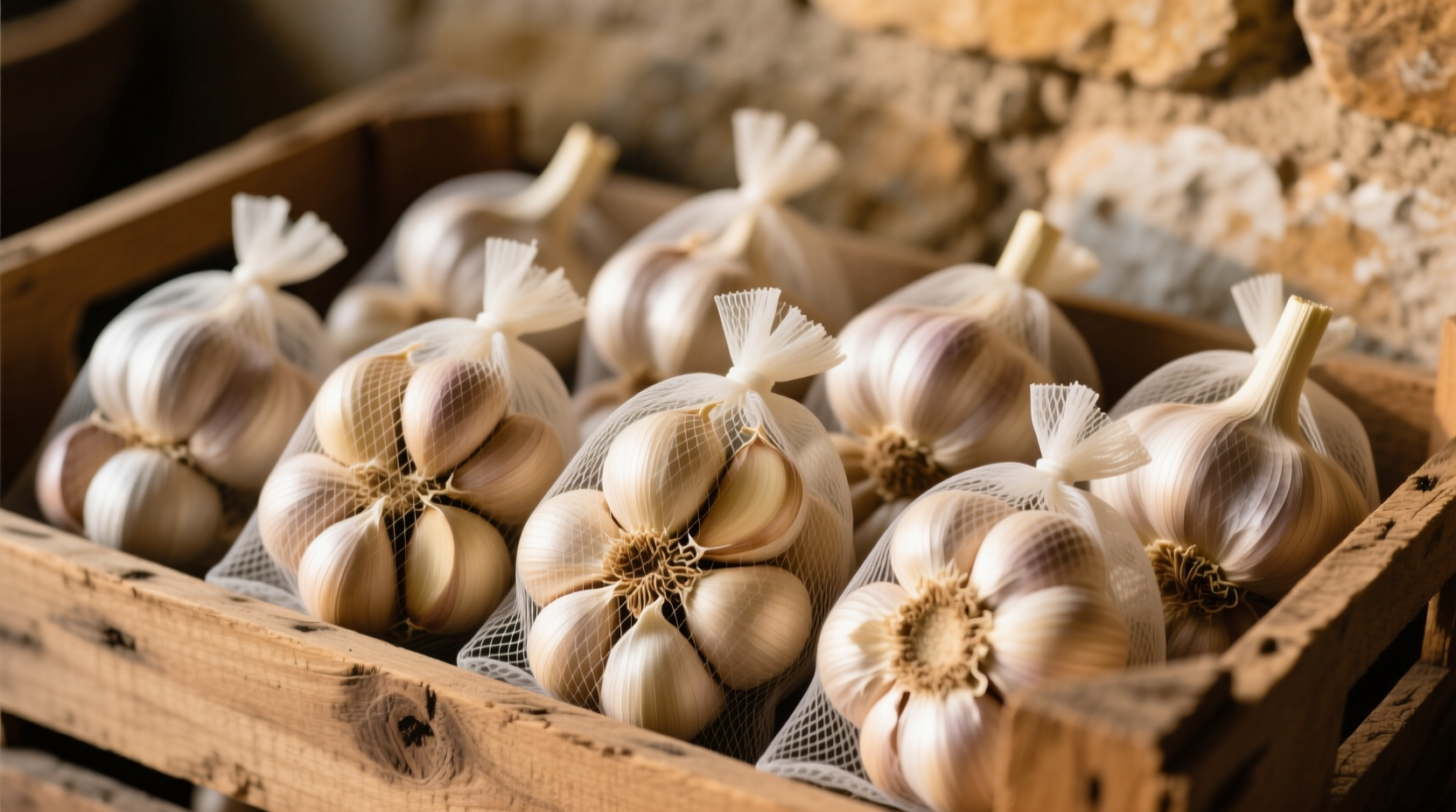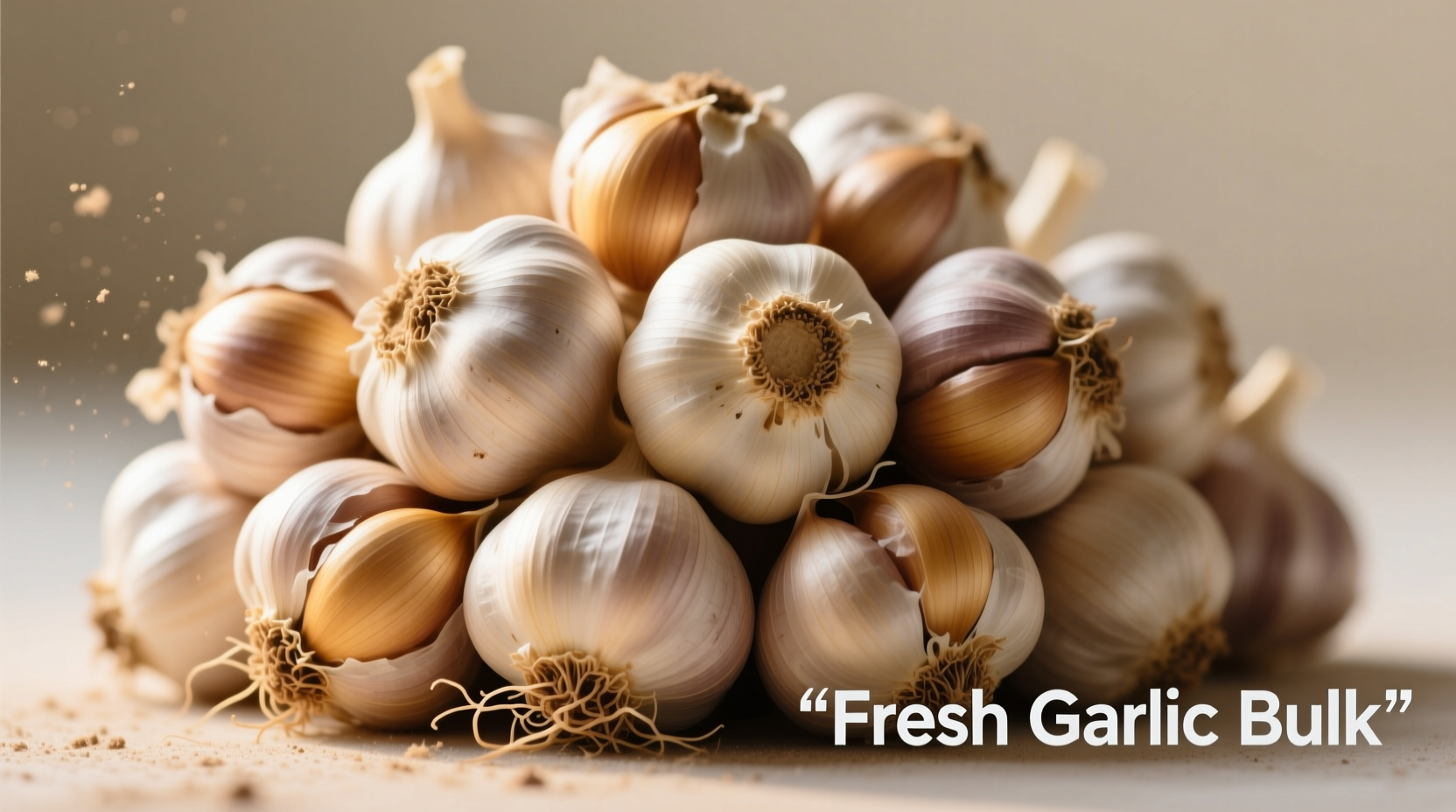Buying garlic in bulk saves 30-50% compared to retail prices while ensuring consistent flavor for frequent cooking. Bulk garlic refers to purchasing 5+ pounds of fresh bulbs, pre-peeled cloves, or dried products at wholesale rates from specialty suppliers, farmers markets, or food service distributors. Proper storage extends shelf life up to 6 months for fresh bulbs and 12+ months for dried varieties.
As a chef who's managed restaurant spice inventories for over 15 years, I've seen how strategic bulk garlic purchasing transforms both professional and home kitchens. Whether you're meal prepping for a large family or running a food business, understanding bulk garlic options prevents costly mistakes and flavor compromises. Let's explore how to make smart bulk purchases that deliver maximum value without sacrificing quality.
Understanding Bulk Garlic Options: Forms and Quality Indicators
Not all bulk garlic is created equal. The form you choose impacts storage life, preparation time, and flavor intensity. Here's what experienced buyers consider before purchasing:
| Garlic Form | Best For | Shelf Life | Price per Pound |
|---|---|---|---|
| Fresh whole bulbs | Long-term storage, roasting, pickling | 4-6 months (properly stored) | $1.50-$3.00 |
| Pre-peeled cloves | Immediate use, meal prep | 10-14 days refrigerated | $3.50-$6.00 |
| Dried garlic flakes | Cooking, seasoning blends | 12-18 months | $4.00-$7.00 |
| Minced frozen | Convenience-focused cooking | 6-12 months frozen | $5.00-$8.00 |
According to USDA agricultural reports, fresh garlic bulbs maintain optimal flavor compounds when stored between 32-40°F with 60-70% humidity. The National Restaurant Association notes that professional kitchens typically save 35% by purchasing fresh bulbs in 20-pound cases compared to retail pricing.
Where and How to Buy Bulk Garlic
Your purchase location significantly impacts both quality and value. Consider these options based on your needs:
Local Sources
- Farmers markets: Purchase directly from growers during harvest season (July-October in North America) for the freshest product. Look for firm bulbs with tight skins and no sprouting.
- Co-ops: Many food cooperatives offer member pricing on 5-10 pound increments of locally grown garlic.
Commercial Suppliers
- Restaurant supply stores: Require business licenses but offer the best prices on 20+ pound cases. Sysco and US Foods typically charge 20-30% less than grocery stores.
- Online specialty retailers: Companies like Melissa's or Frieda's ship nationwide with proper temperature control. Expect to pay $1.75-$2.50 per pound for premium varieties.
The Food Marketing Institute reports that 68% of home cooks who buy bulk garlic through restaurant suppliers save at least $100 annually compared to retail purchases. However, always verify supplier certifications - the FDA recommends checking for Good Agricultural Practices (GAP) certification when purchasing from commercial sources.
Proper Storage Techniques for Maximum Shelf Life

Improper storage causes 40% of bulk garlic purchases to spoil prematurely, according to post-harvest studies from Cornell University. Follow these science-backed storage methods:
Fresh Bulbs
- Store in mesh bags or ventilated containers in a cool, dark place (55-65°F)
- Maintain 60-70% humidity - too dry causes shriveling, too moist encourages mold
- Never refrigerate whole bulbs - cold triggers sprouting
Prepared Garlic
- Pre-peeled cloves: Store in olive oil in airtight containers for up to 2 weeks
- Minced garlic: Freeze in ice cube trays then transfer to freezer bags
- Dried garlic: Keep in vacuum-sealed containers away from light
The National Center for Home Food Preservation confirms that properly stored hardneck garlic varieties (like Rocambole) maintain flavor integrity for 5-6 months, while softneck types last 8-10 months under optimal conditions.
Cost Analysis: When Bulk Buying Makes Financial Sense
Not every household benefits from bulk garlic purchases. Consider these factors before buying:
Situation Analysis
- Worth buying in bulk: Households cooking 5+ meals weekly, food businesses, canning/preserving enthusiasts
- Not recommended: Single-person households using garlic occasionally, those without proper storage space
Break-Even Point Calculation
Based on USDA market data, you need to use at least 3 pounds monthly to justify bulk pricing. Here's the math:
- Retail price: $3.50/lb (average)
- Bulk price: $2.00/lb (wholesale)
- Break-even: (3.50-2.00) x pounds = storage container cost ($15)
- Required monthly usage: 10 pounds to recoup container costs in 1 month
The American Culinary Federation recommends calculating your actual usage over 30 days before committing to bulk purchases. Many home cooks overestimate consumption by 30-40%, leading to wasted product.
Practical Usage Tips for Bulk Garlic
Maximize your investment with these professional techniques:
Flavor Optimization
- Let minced garlic rest 10 minutes after cutting to activate allicin (the compound responsible for health benefits)
- Add to hot oil at 325°F for optimal flavor release without burning
- Roast whole bulbs at 400°F for 30 minutes to create sweet, spreadable garlic
Batch Preparation
When processing large quantities:
- Use the "smash and peel" method: Place cloves under a knife blade and press firmly
- Freeze minced garlic in 1-tablespoon portions for recipe-ready use
- Create garlic-infused oil (refrigerate and use within 4 days to prevent botulism risk)
Food science research from UC Davis shows that crushing garlic releases 3-5 times more flavor compounds than slicing. However, prolonged exposure to air degrades these compounds after 30 minutes - process only what you'll use within that timeframe.
Common Mistakes to Avoid
Even experienced buyers make these errors that compromise quality and value:
- Buying out of season: Fresh garlic harvested in summer maintains best quality through winter. Winter purchases often come from long-term storage with diminished flavor.
- Ignoring variety differences: Hardneck varieties (more flavorful) have shorter shelf life than softneck (better for storage).
- Storing near potatoes: Both release moisture that accelerates spoilage of the other.
- Washing before storage: Moisture promotes mold growth - clean only before use.
The Specialty Crop Block Grant Program notes that 22% of bulk garlic waste occurs from improper variety selection for intended storage duration. Always match your purchase to your consumption timeline.
FAQ Section
How much bulk garlic should a family of four purchase monthly?
For regular cooking (5-7 meals weekly), 2-3 pounds of fresh bulbs provides optimal value without waste. The USDA Food Plans indicate this quantity supports standard recipe requirements while allowing for proper rotation.
Can bulk garlic be frozen successfully?
Yes, but only after preparation. Whole bulbs don't freeze well, but peeled cloves or minced garlic frozen in oil portions maintain quality for 12 months. The National Center for Home Food Preservation confirms freezing preserves 95% of flavor compounds when properly packaged.
What's the difference between bulk garlic from restaurant suppliers vs. wholesale clubs?
Restaurant suppliers typically offer higher quality grades (USDA No. 1) at better prices but require business verification. Wholesale clubs sell consumer-grade product in smaller quantities with less quality consistency. Foodservice distributors charge 15-25% less but require 20+ pound minimums.
How can I tell if bulk garlic has been properly stored before purchase?
Check for firm bulbs without soft spots, tight papery skins, and no green sprouts. Squeeze test: bulbs should feel solid, not mushy. Avoid any with mold, strong odors, or excessive dirt. The Produce Marketing Association recommends inspecting at least 3 bulbs from different parts of the case.











 浙公网安备
33010002000092号
浙公网安备
33010002000092号 浙B2-20120091-4
浙B2-20120091-4